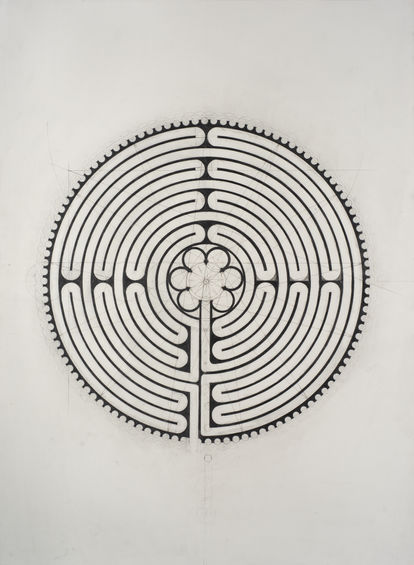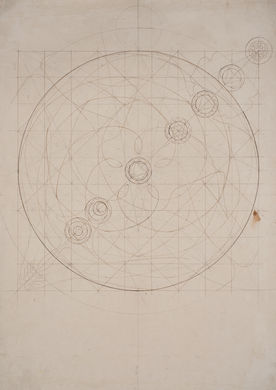Mumbai Airport Project
For the Mumbai International Airport Limited (MIAL) project Desmond has embarked on a joint project with Ramesh Kalkur that reinterprets the Gopuram or temple peculiar to Tamil Nadu.
The work is titled ‘Gopuram - Gods and Goddesses of south India’ or Frequent Flyers.
Mumbai Airport Project
For the Mumbai International Airport Limited (MIAL) project Desmond has embarked on a joint project with Ramesh Kalkur that reinterprets the Gopuram or temple peculiar to Tamil Nadu.
The work is titled ‘Gopuram - Gods and Goddesses of south India’ or Frequent Flyers.
Mumbai Airport Project
For the Mumbai International Airport Limited (MIAL) project Desmond has embarked on a joint project with Ramesh Kalkur that reinterprets the Gopuram or temple peculiar to Tamil Nadu.
The work is titled ‘Gopuram - Gods and Goddesses of south India’ or Frequent Flyers.
Mumbai Airport Project
For the Mumbai International Airport Limited (MIAL) project Desmond has embarked on a joint project with Ramesh Kalkur that reinterprets the Gopuram or temple peculiar to Tamil Nadu.
The work is titled ‘Gopuram - Gods and Goddesses of south India’ or Frequent Flyers.
MOSA INDIA
MOSA INDIA
MOSA INDIA
MOSA INDIA
Studios of Devotion is a four-part documentary series directed by Gautam Ghose with Jagannath Guha as associate director and artist-curator Desmond Lazaro as scriptwriter and narrator.
Visiting artists and their studios in different parts of India, the film captures the spirit of devotion and spirituality as practiced in contemporary India.
Studios of Devotion is a four-part documentary series directed by Gautam Ghose with Jagannath Guha as associate director and artist-curator Desmond Lazaro as scriptwriter and narrator.
Visiting artists and their studios in different parts of India, the film captures the spirit of devotion and spirituality as practiced in contemporary India.
Studios of Devotion is a four-part documentary series directed by Gautam Ghose with Jagannath Guha as associate director and artist-curator Desmond Lazaro as scriptwriter and narrator.
Visiting artists and their studios in different parts of India, the film captures the spirit of devotion and spirituality as practiced in contemporary India.
Studios of Devotion is a four-part documentary series directed by Gautam Ghose with Jagannath Guha as associate director and artist-curator Desmond Lazaro as scriptwriter and narrator.
Visiting artists and their studios in different parts of India, the film captures the spirit of devotion and spirituality as practiced in contemporary India.
Paintings 2022
COSMOS - Chemould Gallery - Mumbai -
Feb -10- Mar - 26- 2022
Radical Homelessness: On Desmond Lazaro’s Recent Works
Desmond Lazaro’s art has often been situated in a history of diasporic experience spanning the colonial and postcolonial eras. The multiple geographical and cultural displacements in which his family has participated, across generations, would seem to support this choice ofexplanatory framework. What has rarely been noted is that the artist has also always been preoccupied with a deep condition that I would describe as radical homelessness: a preoccupation that he has articulated as a properly spiritual quest.
Lazaro refuses to have his choices overwritten by generic accounts of empire and nation-state, which emphasise foundational events of rupture and amnesia separating ‘pre-colonial’ or ‘pre-national’ pasts from the postcolonial or national present. Instead, he urges us to shift our conceptual framework and points to forms of continuity, both spiritual and philosophical, that are not constrained within historical time.
Lazaro’s recent series, ‘Cosmos’, gestures towards transcendence without missing a single visceral beat. Painstakingly created with natural pigments, ground by the artist in his studio and burnished with agate, these paintings could function as tools of consciousness. Walking through the 12th-century Chartres labyrinth or meditating on the Purusha or Cosmic Person in the Vastu Purusha Mandala is analogous to going on a spiritual quest. It depends on how ready we, the viewers, are to receive grace, divine or otherwise.
These paintings, an outcome of extensive research of medieval manuscripts, encyclopaedias, alchemical treatises and investigations into astrophysics, were born in bereavement. With the death of his beloved mother in 2018, Lazaro’s predicament of radical homelessness became more heightened. He would often scan the sky, wondering if he might find her there. But then the artist had an epiphany that he was “looking in the wrong direction… the greater metaphysical mystery remains on the other end of the telescope: who and what is doing the looking?”
We could parse this insight as the exertion of human agency rather than a submission to the vastness out there. Equally, we could interpret it as an understanding of a cosmic order that rests on the bridge of correspondence: the internal constitution has to resonate with the external order of the universe, the atman with the brahman, jiva with Shiva. In most religions and philosophies, the part is consonant with the whole, the self with the world. You cannot be disordered and hope to decipher the cosmic order.
— Nancy Adajania

























COSMOS - Sketchbook drawings: Chartres Labyrinth
Classroom 2










COSMOS - Sketchbook drawings. Venus Pentagram













COSMOS - Sketchbook drawings. Vastu Purusha Mandala and the Star Cut Diagram




















What is Cosmology? What is Cosmos? The answer to one is the basis of the answer to other, Cosmology by definition presupposes an ordered universe. Cosmology is the logic or study of the laws and intelligence inherent in this ordered universe.
Islamic Patterns An Analytical and Cosmological approach: Thames & Hudson, 1976 Keith Critchlow
Much of this enquiry into the cosmos came after my mother passed away two years ago. I recall the loss being immediate, as if she had slipped into the stars, beyond anything I could imagine, a place of awe, beauty and wonder (if not a little scary).
Strange, as I knew it but could not comprehend it: she was there and I was not, and yet the heavens seemed to hold us both. Grief can take many forms and mine sought comfort in star gazing the series of paintings entitled: The Dunhuang Star Atlas, Mapping the Heavens , Principia I, II & III. & The Sea of Untold Stories. However, the further I delved into depths of space, tangled with gravity, quantum mechanics and the like, the more I seemed to move inward. There was a moment when I realised I was looking in the wrong direction for no matter how far we search, with bigger and better telescopes, the only thing waiting for us is the immensity of space.
When in fact the greater metaphysical mystery remains on the other end of the telescope: who and what is doing the looking ? If we consider this in terms of cosmology which today means the science of the origin of the universe which differs considerably from the original Greek term Kosmos meaning order and adornment. Cosmology as Professor Keith Critchlow suggest, by definition presupposes an ordered universe. Cosmology is the logic or study of the laws and intelligence inherent in this ordered universe. Adornment implies that this law and intelligence is hidden, which begs the question what is it in us that is able to perceive that which is hidden?
In the ancient Vedic (Hindu) tradition this perception is described as the Atman: Soul or Spirit (form), an emanation of Brahman: the universal soul (the formless). We can imagine this as ripples on the sea Brahman is both the ripple (Atman, imminent ) and the sea (Brahman, transcendent). They are one and the same, the unchanging principle, Known (an uncreated wholeness) and the Knowing (manifest process in action) creation.
In the traditional view, life in all its forms has both imminent and transcendent qualities depending the state of matter, these qualities are either awakened or dormant. A stone is asleep, a flower dreaming, animals awake but only man can be fully awake and therefore conscious. Consciousness or sat-cita-nanda (existence, consciousness, and bliss) is the state in which, the Atman lives within Brahman. The problem, of course, is that man is ignorant of this state so the ancients devised philosophical systems including the practice of yoga and meditation that could awaken the individual.
These systems, of which cosmology is but one, can be found throughout the ancient world. In antiquity known as the seven liberal arts as taught in the schools of Plato, Pythagoras and later Plotinus. The knowledge, practice and contemplation of grammar, rhetoric, logic (Trivium) and arithmetic, geometry, music, and astronomy (Quadrivium), liberate the individual soul. However, with the dawn of European enlightenment, cosmology would change as cultures embraced empirical science, through the prisms of Cartesian, Darwinian and Newtonian reasoning. Man, ever since has been denied the ontological relationship between creator and created. The mind was literally wrenched from the body, spirit from soul and all the subsequent divergencies thereafter today we are told that creation is nothing more than a random act of cosmic chemistry.
And from all this arose the paradox that a philosophy which made of human reason the measure of all reality resulted in an astronomical world-view in which man was to appear more and more like a speck of dust amongst other specks of dust, a mere accident without any sort of cosmic precedence, while the medieval perspective, based not on human reason but on the revelation and inspiration, had placed man at the center of the cosmos. Alchemy: Science OfThe Cosmos – Science Of The Soul: Fons Vitae: Titus Burckhardt. 1997
The art and architecture of the medieval world leaves little doubt as to our place within the cosmos, surviving today as a timely reminder of who and what we are. And it is to this I turn in these works, beginning with the labyrinth at Chartres Cathedral in France with Professor Critchlow, a leading Chartres Scholar. As a cosmological diagram, the pathway, a series of eleven concentric circles, the soul’s journey (and eventual return) from the unmanifest to the manifest state. Each circle a different aspect of the heavenly realms; Supreme God (Brahman), Mind, Soul (world soul, Atman), Zodiac (twelve houses) and the seven visible planets, Moon, Sun, Mercury, Venus, Mars, Jupiter and Saturn with the Earth at the center. To walk the labyrinth is to re-enact and contemplate this journey.
The Labyrinth became the inspiration for this series of works, which would eventually morph into a personal investigation into the Cosmos. Perhaps Covid was the catalyst, but the silence of the past few months inevitably draws one deeper into contemplation. I wanted to understand my place within it, create an imagine of the universe and embrace the metaphysical dialogue that I have been struggling with for so long answers; come to a few realizations, which more to do with connecting with inner than outer space. Hopefully these works will reflect this journey as it moves in fits and starts, much like the planets themselves, as they appear to whizz back and forth against one another. And yet, like the ancients, I see them as archetypes, giant spheres moving in perfect circles, a harmony as Johannes Kepler would have it, for what we see
and what we know often differs.
Perhaps our universe really is a reflection of an archetypal realm

